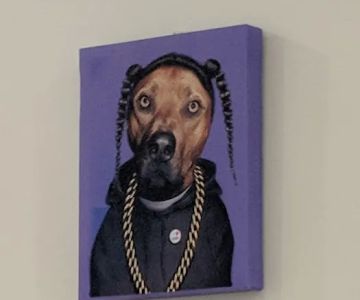What Industry is Veterinary: Exploring the Growing Veterinary Sector
If you're passionate about animals and have ever wondered what industry veterinary care belongs to, you're in the right place. The veterinary field plays a critical role in maintaining the health of animals, and it touches on various industries including healthcare, agriculture, and even research. As a veterinarian or someone considering a career in animal care, understanding the different facets of the veterinary industry is crucial. Let’s dive into what the veterinary industry encompasses and how it impacts not only animal health but also human health and the economy.

5363 Peters Creek Rd, Roanoke, VA 24019, USA
See Details1. The Veterinary Industry Overview
The veterinary industry primarily focuses on the care, treatment, and management of animals' health. But it's much more than just animal hospitals or clinics. The industry includes a variety of services, from private veterinary practices to research institutions and agricultural businesses. As a veterinarian, you may work in a hospital, a lab, or even on a farm, and each setting offers unique challenges and opportunities.
1.1 The Scope of Veterinary Care
The scope of the veterinary industry includes pet care, livestock health, wildlife preservation, and even laboratory research. For example, veterinary professionals provide healthcare for pets, such as dogs and cats, while also playing an essential role in livestock management and food safety. Veterinarians in agricultural settings monitor and treat diseases in farm animals, ensuring safe and healthy food products for human consumption. In wildlife conservation, veterinarians work to protect endangered species and help maintain ecological balance. This broad scope illustrates just how significant the veterinary field is to both animals and humans.
2. Different Sectors Within the Veterinary Industry
The veterinary industry is diverse, encompassing various sectors that cater to different aspects of animal health. Understanding these sectors is vital whether you’re considering a career in veterinary science or looking for services for your pets. Some of the key sectors within the veterinary industry include private veterinary practice, public health, research and development, and education.
2.1 Private Veterinary Practice
The largest and most visible part of the veterinary industry is private veterinary practice. These practices typically deal with companion animals like dogs, cats, and exotic pets. Veterinarians in these settings provide a range of services, from routine check-ups to surgical procedures and emergency care. I’ve had my own experiences visiting veterinary clinics, where the atmosphere was often calm yet bustling with activity, with pets getting vaccinated, treated for illnesses, or undergoing surgery. Private veterinary clinics offer a variety of career paths including veterinary technicians, assistants, and administrative roles.
2.2 Public Health and Government Veterinary Roles
Veterinarians also work in public health and government roles. These professionals often focus on managing diseases that affect both animals and humans, such as zoonotic diseases like rabies or avian flu. Veterinarians in public health work with government agencies like the Centers for Disease Control and Prevention (CDC) to monitor and control animal-related diseases that can affect human populations. This branch of the veterinary industry plays a critical role in safeguarding public health and ensuring that the food we eat is safe and free of animal-borne diseases.
2.3 Research and Development
Research is another essential component of the veterinary industry. In this sector, veterinary professionals work in labs, researching new treatments, vaccines, and ways to improve animal health. Research veterinarians play a crucial role in advancing veterinary science, helping to create better medications, diagnostic tools, and animal management practices. For example, advancements in vaccines for pets and livestock are made possible through research and clinical trials conducted by veterinary scientists.
3. Key Roles in the Veterinary Industry
The veterinary industry is composed of many roles beyond the well-known position of veterinarian. Understanding these roles will give you a better picture of the diversity within the industry. As someone who has interacted with many professionals in this field, I can confidently say that it’s a highly collaborative industry. Here are some of the key roles:
3.1 Veterinarians
At the heart of the veterinary industry are veterinarians. They are responsible for diagnosing and treating animal diseases, performing surgeries, and providing preventive care. To become a veterinarian, one must complete extensive education, including obtaining a Doctor of Veterinary Medicine (DVM) degree. Veterinarians can specialize in different fields, such as small animal medicine, large animal care, or exotic animal care. I know several vets who have specialized in fields like oncology or dermatology, working with patients that require specialized care.
3.2 Veterinary Technicians and Technologists
Veterinary technicians and technologists are an integral part of the veterinary team. They assist veterinarians by performing diagnostic tests, preparing animals for surgery, and providing nursing care. They often have specialized training, including certifications that vary by state. I’ve had experiences with vet techs who were incredibly skilled at helping calm anxious pets and assisting with exams. Their role is crucial in ensuring that animals receive the best care possible.
3.3 Veterinary Assistants and Other Support Staff
In addition to veterinarians and technicians, veterinary clinics also employ assistants and other support staff. These roles include scheduling appointments, handling administrative tasks, and assisting with client communication. The work of veterinary assistants and front office staff ensures that the clinic runs smoothly, which allows the veterinarians and technicians to focus on patient care. Their contribution cannot be overstated, as they help create an efficient and welcoming environment for both pets and pet owners.
4. Career Opportunities in the Veterinary Industry
For anyone considering a career in the veterinary field, there are numerous opportunities across the various sectors. The demand for veterinary professionals continues to grow as more people become pet owners and as the need for veterinary services in agriculture and public health expands. The rise of pet ownership, coupled with advances in veterinary technology, has created a need for more qualified professionals in this field. Whether you're interested in direct patient care, research, or working in the public sector, there is a place for you in the veterinary industry.
4.1 How to Get Started
If you’re thinking about pursuing a career in veterinary medicine, the first step is education. Start by researching accredited veterinary schools and programs in your area. Most veterinary programs require a strong background in science, particularly biology and chemistry, so focus on building a solid foundation during your undergraduate studies. Internships and volunteer experiences at animal shelters or veterinary clinics can also help you gain valuable hands-on experience and make important connections in the industry.
4.2 Salary and Job Outlook
Veterinary professionals enjoy a variety of salaries depending on their role and specialization. For example, veterinarians in private practice may earn more than those working in public health roles. The U.S. Bureau of Labor Statistics reports that the median annual wage for veterinarians is around $95,000, with salaries varying by location and level of experience. As the demand for veterinary services increases, job prospects in this field remain strong, making it a promising career choice for those passionate about animal health.










